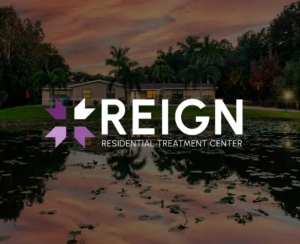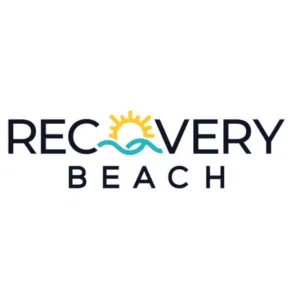Most people are already aware of how common substance abuse is. From alcohol to Class A drugs, people struggle with addiction from every walk of life. What many don’t know, however, is that LGBTQ substance abuse is disproportionately higher than in heterosexual groups. According to a 2016 report published by SAMHSA (Substance Abuse and Mental Health Services Administration), 17.1% of heterosexual adults admitted to using illegal substances at some point in the last year, while for bisexual, gay, and lesbian adults, the number was over double that – 39.1%.
Why is this happening, though – and what can we do to turn this trend around? Since the drivers of addiction in LGBTQ individuals are often different from those of heterosexual people, an important first step is understanding the underlying causes. However, the treatment options are usually the same on an individual level. Those struggling with addiction should find a community support network or check into an inpatient treatment program. Whatever they decide to do, the key is to take action now.
Resources for LGBTQ Substance Abuse
Residential (inpatient) treatment
SAMHSA’s National Helpline 1-800-662-HELP (4357)
Why LGBTQ People Are More Susceptible to Substance Abuse Issues
While most people have to deal with hard circumstances regardless of their sexuality, LGBTQ people have a few unique issues in their community. Some might experience a combination of what’s discussed below, while others may only experience one or two.
Whatever the case, the effects are pretty clear. A SAMHSA study showed that lesbians were more prone to heavy drinking than heterosexual women, while bisexual women were even more likely to abuse alcohol than lesbians. The most common substances used by transgender individuals include injection drugs, methamphetamine, crack cocaine, and marijuana. These substances are also commonly used by gay men as hallucinogens, nitrite inhalants, and tranquilizers.
-
Homelessness and unemployment
If LGBTQ youth feel alienated from their family or are disowned for their sexuality, they’re at high risk for homelessness once they’ve left the house. For some, the priority is to get out of a toxic living situation; the next step, finding another place to live, doesn’t always happen when needed. In many cases, the problem is that these individuals are teenagers with no job, no savings, and few resources; sometimes, the only alternative is homelessness.
Mental issues are also common as a result of discrimination and rejection. Emotional dysregulation often goes hand-in-hand with PTSD, so it could be impossible for some to function consistently enough to hold a steady job. Once again, these circumstances make someone a prime candidate for substance abuse. If they can’t get comfort from the people in their lives, they’ll try to get it from addictive substances.
-
Trauma and sexual abuse
All kinds of things can result in PTSD (Post-Traumatic Stress Disorder). Something you frequently see with members of the LGBTQ community is trauma associated with how they’re treated because of their sexual orientation. It might come from a bully at school, a parent who threatens to kick them out (or does it), or sexual abuse as a child or an adult. Trauma-informed healthcare is often a good option to explore in these situations. A 2001 survey of nearly 1,000 participants revealed that 46% of gay men were molested as children, versus 7% of heterosexual men. The rate of molestation among lesbians was 22%, versus 1% for heterosexual women.
Whether the trauma is in the past or ongoing, drugs and alcohol often seem to block some pain. If more productive coping mechanisms are never found, this could lead to a long-term addiction; if left alone, the addiction will continue as long as the trauma sticks around. In other words, for the rest of the person’s life.
-
Conflict or rejection from family members
For whatever reason, many people are firmly opposed to the LGBTQ community. This leaves LGBTQ people (especially children) in a tough situation; the people supposed to protect and support them draw the line at any sexual orientation they disagree with. Some people are disowned by their families, while others are hounded or treated silently.
This isn’t the case with everyone, but it happens often enough to drive addictive behaviors in the LBGTQ community. The statistics support this: among LGBTQ adults, those with non-supportive parents are 340% more likely to try illicit drugs than those with a healthy family environment. They’re also 840% more likely to have at least one suicide attempt, 340% more likely to try unprotected sex, and 590% more likely to be depressed. And to top it all off, a lack of support from family members also means that recovery is even more difficult than it would have been in the first place.
-
Harassment, bullying, or lack of acceptance by their peers
Whether it’s happening in school, in the workplace, or anywhere else, it’s fairly common for LGBTQ individuals to be bullied because of their sexual orientation. Even if the person responsible doesn’t mean it seriously, hurtful actions or words can significantly push someone towards addictive behaviors.
This behavior is especially damaging to children, who are still developing their self-image at that stage. If they grow up being told that they’re somehow less worthy or valuable than heterosexual people, that often affects how they see themselves. Alcohol or drugs become a coping mechanism, frequently fueled by depression, anxiety, and low self-esteem.
If those targeted by harassment don’t have anyone to discuss the problem with, they’ll probably bottle up their feelings. In many cases, they’ll also turn to addictive substances to help them cope.
What’s the Next Step?
Even if you can’t get involved in organizations that are actively helping those affected by LGBTQ substance abuse in your community, you can still have an impact closer to home. Stick up for them if you hear someone else talking badly about them, offer in-person support if you can, and spread awareness of the issue both in and outside the LGBTQ community.















